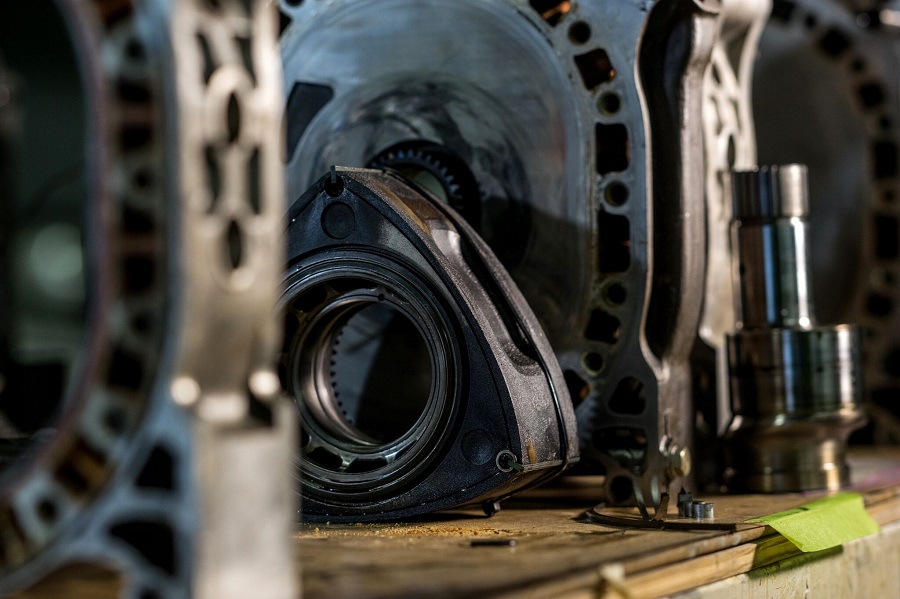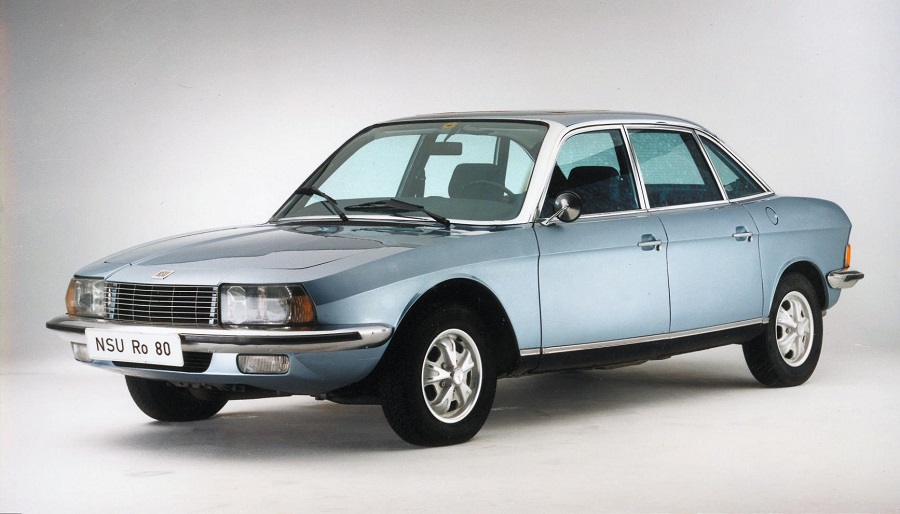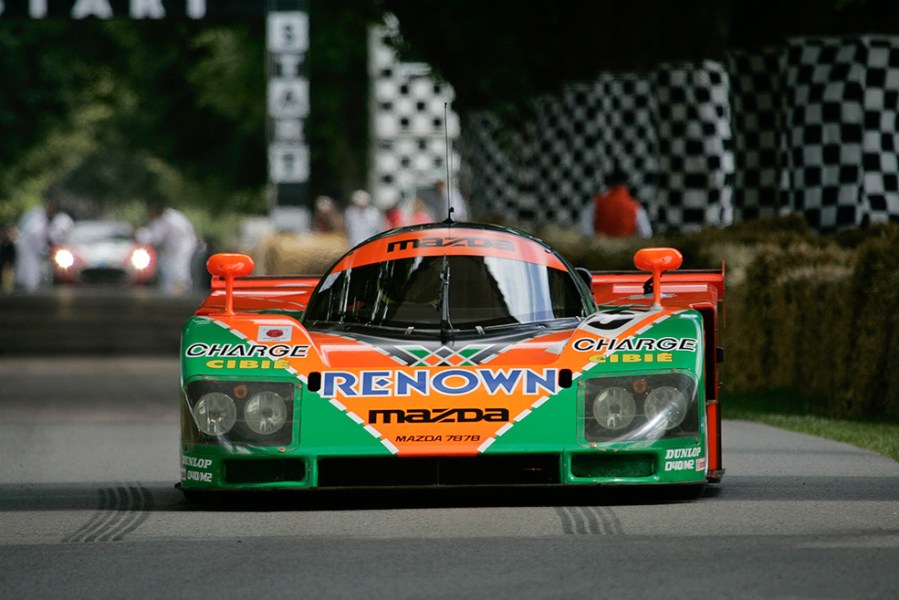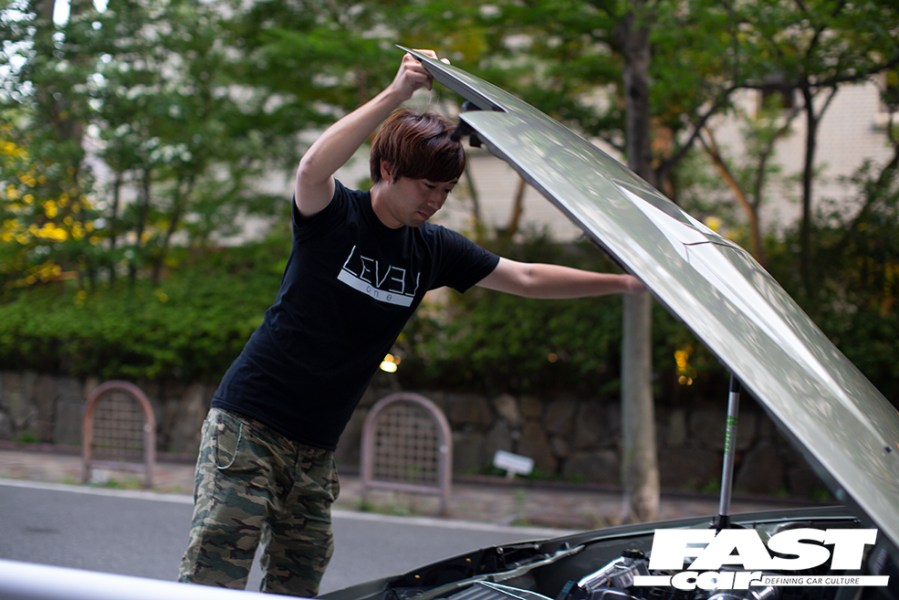Ever wanted to know more about those weird Wankel rotary engines? Here’s our full guide to one of the most controversial motors ever built.
Despite being over 60 years old, the Wankel rotary engine concept is still often misunderstood. Made famous by the Mazda RX-7 and 787B racer, if you’ve spent any amount of time in the online automotive space, you’ll know that rotaries have a reputation for one thing: unreliability. However, as we’ll go on to show you, that notoriety isn’t entirely fair. Though, don’t get us wrong, there’s still some other drawbacks to be aware of. Before we dive into that though, let’s bring you up to speed with what a Wankel rotary engine actually is…

How Does a Wankel Rotary Engine Work?
Intake
As the name suggests, Wankel rotary engines make use of curved triangular rotors rather than pistons. These sit within a vertically-positioned, oval-shaped housing and rotate around an output shaft.
When the rotor rotates, it creates fluctuating pockets of air between itself and the wall of the housing at different locations around the housing’s inner perimeter. The vacuum in those pockets then draws air and fuel mixture into the housing. Consider this as the equivalent to a piston motor’s intake stroke.
Combustion
Next, the second ‘peak’ of the triangular rotor closes off the air-fuel mix pathway when it passes by the intake port. As the rotor continues to rotate, the space between the rotor and the housing wall decreases. This compresses the air-fuel mix up against the wall of the opposite side of the housing. There’s a certain part of the wall where compression will be at its highest point during the rotor’s cycle, and there, you’ll find a pair of spark plugs. These ignite the highly compressed air/fuel mixture, and voila, you have combustion.
Exhaust
The mini combustion explosion propels the rotor, thus continuing its cycle. As the rotor continues to rotate around the housing, its first peak will soon meet the exhaust port. When that peak passes by the port, it opens the channel for exhaust gases to be released. And there you have it, a full combustion cycle of a rotary engine. In fact, designers scaled the rotor and its housing in such a way that while this exhaust process is happening, the third peak of the rotor will already be at the intake port, drawing in another round of air-fuel mix. And so, the cycle continues, propelling the rotor which in turn propels an ‘eccentric output shaft’ (basically a crankshaft), which sends the engine’s energy further along the drivetrain, and eventually to the wheels.

The History of Wankel Rotary Engines
If you were to ask enthusiasts about which cars they most associate rotary engines with, there’s a good chance they’ll say Mazda’s RX sports cars. However, the Japanese marque wasn’t the first to deploy rotary tech in its production cars. Instead, that accolade goes to the now-defunct German brand, NSU.
German Origins
In the 1950s, NSU had an engineer on their books called Felix Wankel, and – as the name suggests – it was he who first came up with the idea for a Wankel rotary engine. Given the complexity of the development process, it wasn’t until 1964 that the first rotary-powered car emerged: the NSU Spider. That two-door roadster was soon followed up by the NSU Ro80 saloon, and upon first impressions, the Ro80 won many fans. In fact, it even won European Car of the Year in 1968.
As often happens with pioneering new tech though, flaws soon began to emerge in the early rotary engines’ design. This translated into a rather short lifespan for the Ro80, which effectively killed off NSU as a whole.
It wouldn’t have been a surprise if the rotary engine story ended there. However, despite the demise of NSU, Mazda decided to take a brave pill and invest in Wankel and his ideas.

Mazda’s Association with Wankel Rotary Engines
The rest of this tale will be familiar to many of you, I’m sure. It’s a venture that would ultimately result in Mazda’s lineage of RX sports cars, most famously the RX-7 and RX-8. The RX-7 in particular is a real automotive icon. On the track, the first generation was victorious at the gruelling Spa 24 Hours (quite a feat for a car with an ‘unreliable’ reputation), while later models became icons of the modifying and tuning scene.
Those RX-7s and RX-8s make use of a two-rotor design, known by enthusiasts as the ’13B’ engine. The two rotors are set 180 degrees apart, meaning that they complement each other during the combustion cycle process. In other words, just as one rotor’s peak would enter and pass the combustion stage, the second rotor would be just behind, ready to take up the slack when the first rotor moves on to exhaust.
In rare circumstances, you can also get 3-rotor and 4-rotor Wankel engines for some extra oomph. More rotors means less time between each rotor’s combustion stage, ensuring smooth, potent power delivery. Quad-rotor engines were typically reserved for race cars in the past, most notably the Mazda 787B which took outright victory at Le Mans. However, in the modern day, we’re beginning to see extreme tuner builds featuring these near-mythical ’20B’ quad-rotors too.

The Benefits of Wankel Rotary Engines
There’s plenty of reasons beyond the simple novelty factor as to why some people love these rotary engines. For a start, a single rotor is effectively doing the job of three pistons: intake, combustion, and exhaust all occur pretty much simultaneously. In practice, that equates to a lot of power from a relatively small, lightweight engine.
Another endearing feature of Wankel rotary engines is the fact that their rotors only move in one direction. So, compared to the jerky up-and-down reciprocating motion of piston engines, healthy rotary cars will have a much smoother start-up and power delivery while driving. What’s more, that lack of reciprocating mass means that rotaries can also rev super high with little complaint.

The Downsides of Wankel Rotary Engines
Of course, we aren’t going to pretend that rotaries are perfect. After all, there’s a reason why they’re so rarely found.
Mechanical Frailties
In the early NSU days, when Ro80s began to drop like flies, Wankel soon realized that the vacuum chambers created during each part of the combustion cycle could lose compression due to dodgy rotor sealing. The addition of apex seals certainly helped the issue massively, but Wankel would also have to engineer his way out of a heating issue too.
As the intake, combustion, and exhaust processes all happen within the same housing, you end up with parts of the rotor and housing wall reaching very different temperatures. And, as secondary school science lessons will tell you, metals can change shape slightly at different heats. So, in a scenario which relies upon perfect sealing between the rotor and the housing walls, this can be problematic. Coolant ‘jackets’ surrounding the perimeter of the housing wall were introduced by Wankel to try to mitigate this problem, but ultimately it’s not something you can solve perfectly. Physics simply won’t allow it.
What’s more, in the process of the combustion cycle, there’s an awful lot of friction that occurs as the rotor passes by the walls of its housing. As such, rotary engines drink motor oil like an alcoholic at Oktoberfest, which means they require far more vigilant maintenance compared to regular piston-engined cars. Arguably, this is where the main unreliability argument probably stemmed from. There will have been plenty of RX owners out there who were unaware of, or unsympathetic to the cars’ more taxing demands. If neglected, it won’t be long before your rotary goes bang.
Economy & Environment
That isn’t all that’s bad about Wankel rotary engines either. Compared to piston motors, they aren’t blessed with the best thermal efficiency, thanks to the quirky shape of the space where combustion occurs. As a result, unburnt fuel can often get deposited through the exhaust system, leading to backfires and a less-than-ideal MPG figure.
Then we get to the environmental stuff. More burnt oil means more tailpipe emissions, and that’s bad news for the health of our planet. In fact, environmental regs are a big part of the reason why the Mazda RX-8 bowed out at the beginning of the 2010s. Ultimately, Mazda simply couldn’t find a way to get rotary tailpipe emissions to meet the ‘Euro 5’ standards. If you want, you can read more about Euro emissions standards in our handy ULEZ guide.

Conclusion
So, there you have it. The Wankel Rotary Engine has plenty of merit from a performance point of view. Higher power density, smooth power delivery, and a relative lack of weight are all features which will appeal to car enthusiasts like you and I.
However, the internet isn’t entirely wrong. These engines do have achilles heels, and to get the most life out of them as possible, you’ll have to take maintenance more seriously than you would with any other car. Still, for some people that’s a price worth paying for the fun you’ll have when you get behind the wheel.
Plus, while the RX-8 died out in 2012, it appears as though there’s still a future for rotary powertrains despite their decade-long hiatus. Emissions laws will block the creation of any future full-on rotary models, however, Mazda has just announced its intentions to deploy rotary tech as a form of hybrid EV range extender. So, who knows, maybe there is room for a reborn RX sportscar in our electrified future…








